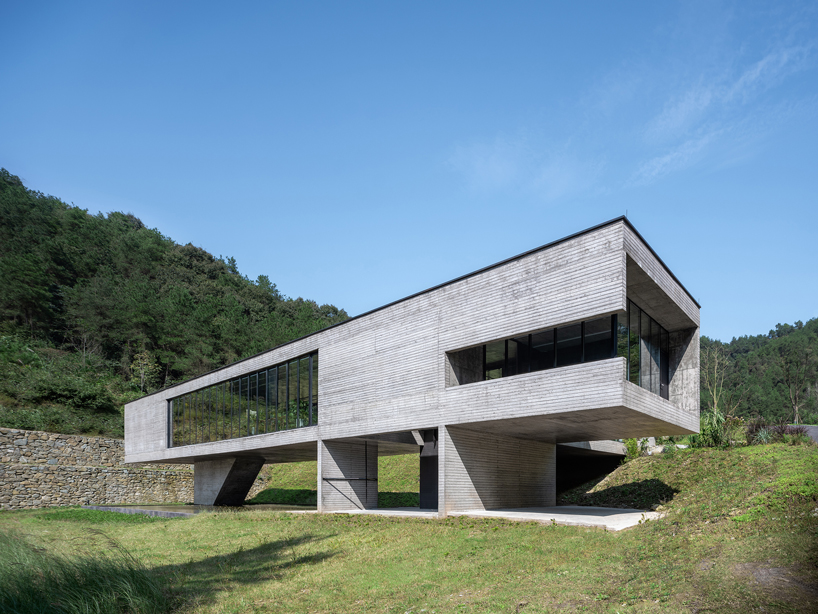floating concrete public amenities building emerges in hubei
Moguang Studio has completed a ‘floating’ concrete structure that anchors a new guesthouse complex in Longwanggou Village, Hubei Province, China. Serving as a multifunctional amenities building with café, dining, and gathering spaces, the suspended project inserts a striking horizontal volume into a terraced valley near the Danjiangkou Reservoir. Inspired by the accidental horizon created by a temporary blue construction fence on site, the architects translated this fleeting gesture into a permanent architectural intervention — one that stitches together the surrounding hills while redefining the relationship between landscape and built form.
the suspended structure | all images courtesy of Moguang Studio
a horizon reimagined by moguang studio
The design by Moguang Studio began with the terrain’s transformation into artificial terraces during preliminary site works, a move that altered the valley’s natural topography. When encountered by the architects, the bright construction barricade cutting across the slope suggested an accidental but powerful horizon. Rather than conceal this incision, the studio amplified it with a precise concrete volume that extends laterally across the site, echoing the fence’s graphic clarity while introducing a functional landscape corridor. The textured concrete, cast using standard decking boards, preserves the imprint of wood grain, softening the geometry with tactile detail.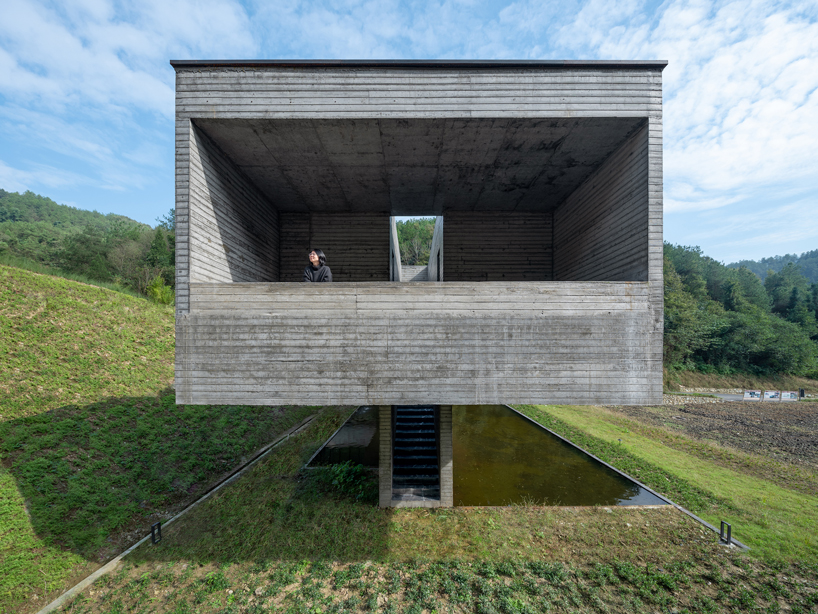
the reflecting pool echoes the horizontal abstraction of the architecture
voids and light
Spatially, the building is organized around three light courts carved into the concrete mass. Openings and voids frame elements of the natural environment, resetting orientation as users move through the structure. At the core is a 7.5-meter cubic court that vertically links sky and ground while horizontally connecting dining, kitchen, and meeting areas. This interplay of solidity and void establishes a rhythmic, layered experience where interior and exterior blur.
To achieve long spans with minimal supports, the roof and floor are constructed as ribbed concrete slabs forming a structural shell. Full-height windows reduce visual mass and maximize transparency, while cross-ventilation is enabled through operable openings. A thin reflecting pool atop the roof lightens the building’s presence, mirroring distant mountains and the reservoir. Cast in a single pour with subtle cambering to prevent cracking, the shell stands as a precise geometric insertion in the valley — both grounded in material tactility and floating in abstraction.
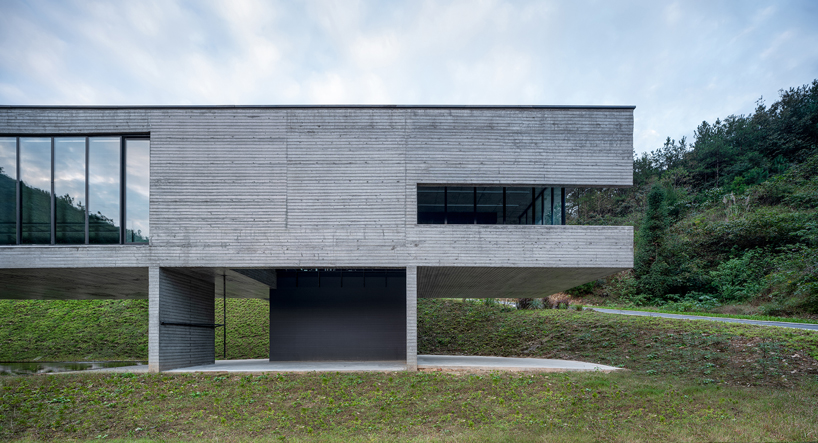
behind the main facade lies a spatial system of vertical light courts and orderly openings
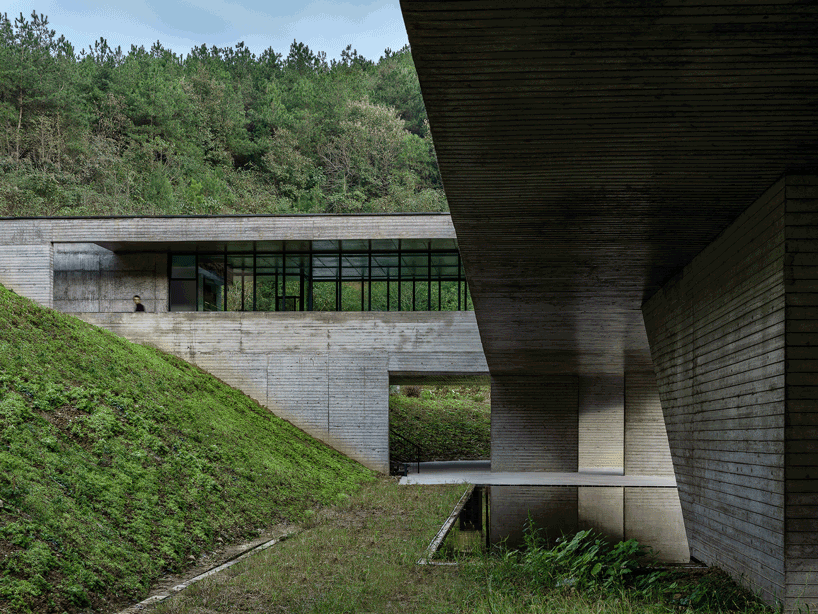
sculpting structural tension through reflection and shadow
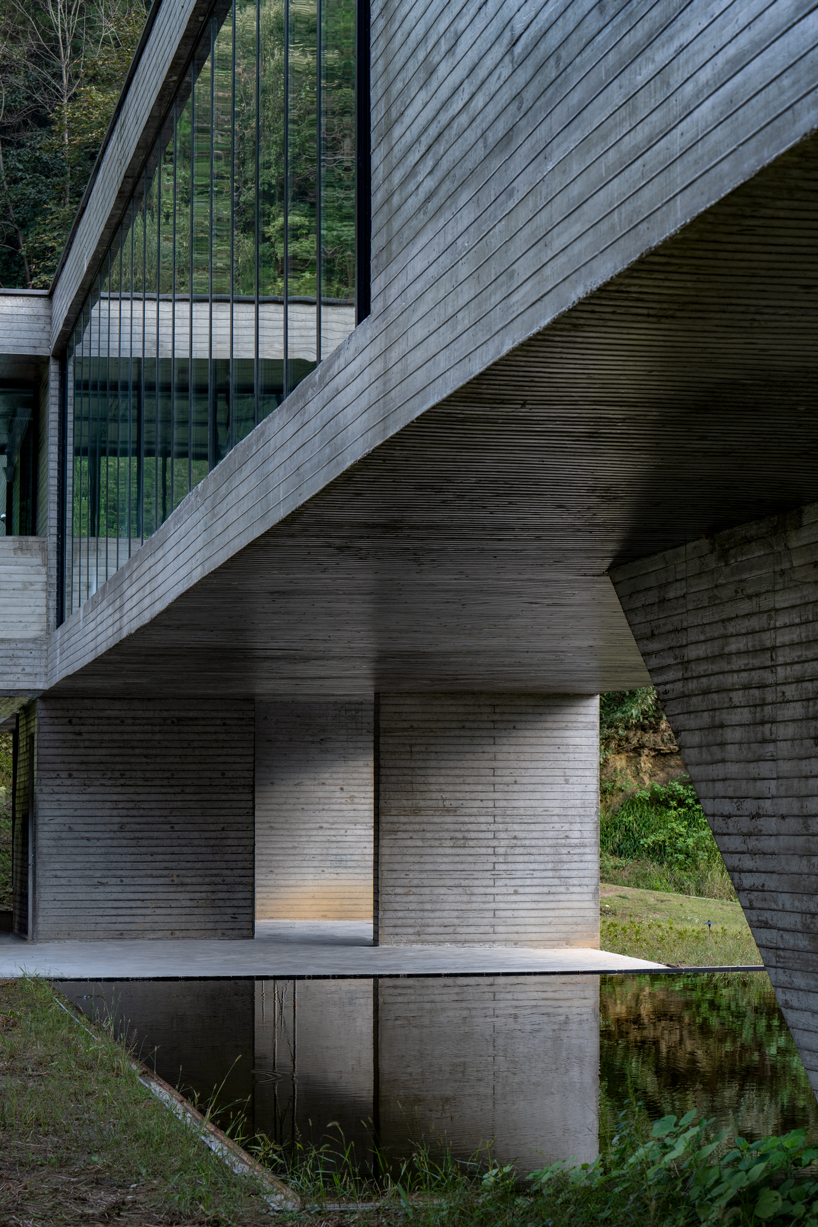
ground level shear walls are abstracted into geometric installations
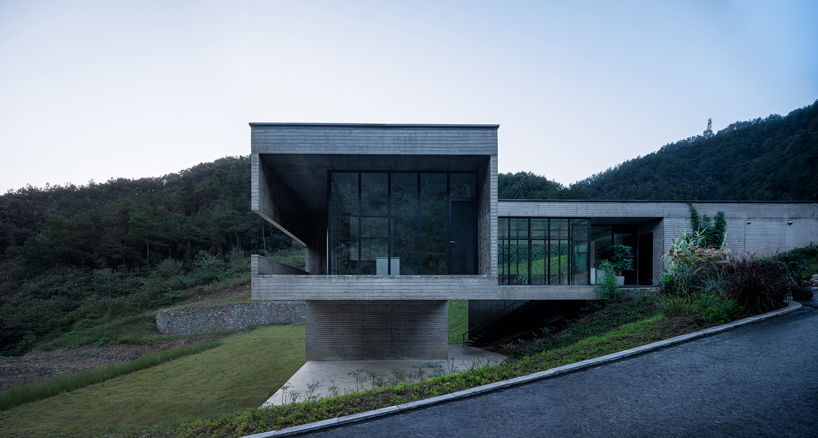
main entrance


